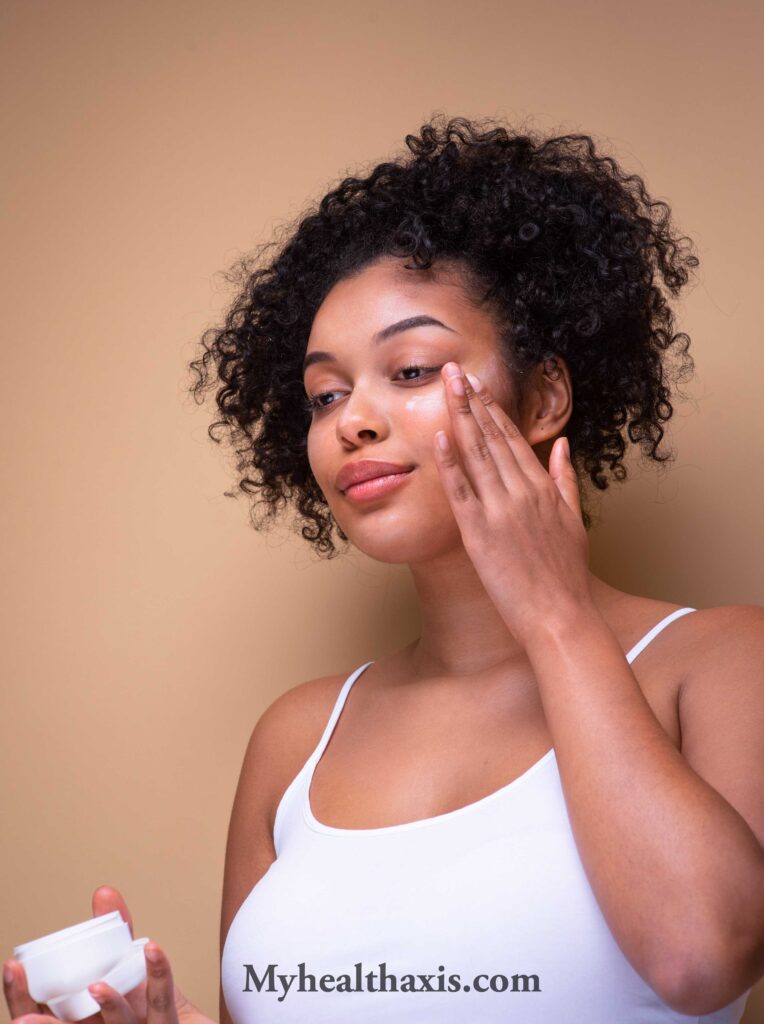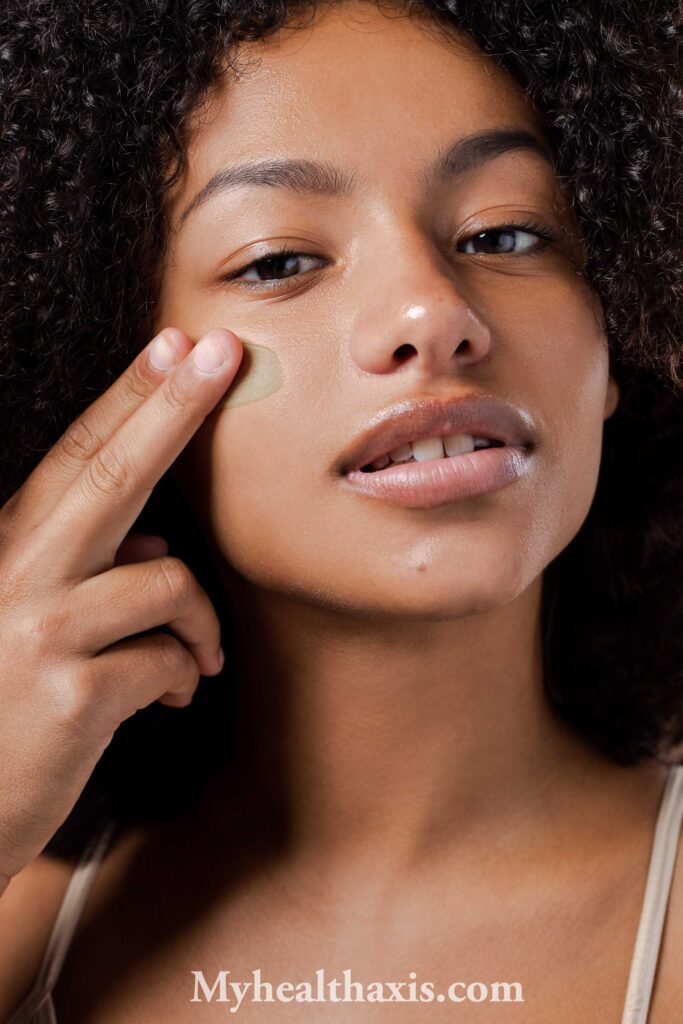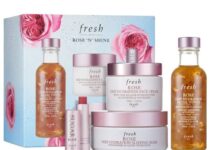Skincare for Oily Skin: Managing Breakouts and Acne

Understanding oily Skin
Oily skin is a skin type characterized by an overproduction of sebum, the skin’s natural oil. This excess sebum can give the skin a shiny appearance and contribute to issues like enlarged pores, acne, and a persistent greasy feel. Several factors contribute to oily skin, including genetics, hormonal fluctuations, and environmental influences.
- Genetics: Family history plays a significant role in determining skin type. If your parents or close relatives have oily skin, there’s a higher likelihood of inheriting this trait.
- Hormonal Changes: Hormones, particularly androgens, stimulate the sebaceous glands to produce more oil. This is why oily skin is often more prevalent during puberty, menstruation, and pregnancy.
- Environmental Factors: Humidity and hot weather can trigger the skin to produce more oil. Additionally, using harsh or drying skincare products can prompt the skin to overcompensate by producing even more oil.
Managing oily skin involves adopting a targeted skincare routine:
- Cleansing: Regular cleansing helps remove excess oil, preventing clogged pores and breakouts. However, harsh cleansers can strip the skin, leading to increased oil production. Opt for a gentle, balancing cleanser.
- Moisturizing: Contrary to a common misconception, oily skin needs moisture too. Using a lightweight, oil-free moisturizer helps maintain hydration without clogging pores.
- Exfoliation: Regular exfoliation helps remove dead skin cells and unclog pores. Salicylic acid is a beneficial exfoliant for oily skin as it penetrates oil to exfoliate inside the pore.
- Skincare Ingredients: Look for products containing ingredients like niacinamide, hyaluronic acid, and salicylic acid. These can help regulate oil production and promote a healthier complexion.
- Sun Protection: Use a broad-spectrum sunscreen to protect your skin from harmful UV rays. Some sunscreens are specifically formulated for oily skin, ensuring protection without adding extra greasiness.
Understanding your skin’s needs and adopting a consistent, tailored skincare routine is crucial in managing and maintaining the health of oily skin.
See Also: Skincare For Sensitive Skin: Creating a Sensitive Skincare Routine
Cleansing Routine For Oily Skin
- Choose a Gentle Cleanser: Opt for a mild, non-comedogenic cleanser to avoid stripping the skin of essential oils. Gel-based or foaming cleansers work well for oily skin types.
- Frequency Matters: Cleanse your face twice daily – in the morning and before bedtime – to remove excess oil, impurities, and accumulated dirt.
- Warm Water: Use lukewarm water for cleansing. Hot water can strip the skin of moisture, triggering increased oil production as the skin tries to compensate.
- Avoid Harsh Scrubs: Steer clear of abrasive exfoliants or scrubs that may irritate the skin. Instead, consider a gentle exfoliating cleanser containing salicylic acid to help unclog pores.
- Pat Dry: After cleansing, pat your face dry with a clean towel. Avoid aggressive rubbing, as it can stimulate oil glands.
- Use Oil-Free Makeup Remover: If you wear makeup, choose an oil-free makeup remover to eliminate makeup without adding extra oil to your skin.
- Consider Double Cleansing: Especially in the evening, consider double cleansing. Start with an oil-based cleanser to remove makeup and sunscreen, followed by a water-based cleanser to eliminate any remaining impurities.
- Incorporate a Clarifying Toner: A toner with ingredients like salicylic acid or witch hazel can help balance oil production and refine pores. Apply it after cleansing and before applying moisturizer.
Remember, consistency is key. Establishing a regular cleansing routine helps manage excess oil and keeps your skin looking fresh and healthy.
Choosing the Right Moisturizer
Opt for Oil-Free Formulas: Look for moisturizers labeled as “oil-free” or “non-comedogenic” to ensure they won’t clog pores or exacerbate oiliness.
- Hydrating Gel Formulas: Gel-based moisturizers are lightweight and absorb quickly, providing hydration without a heavy, greasy feel. They’re well-suited for oily skin.
- Water-Based Moisturizers: Water-based formulations are effective for hydrating oily skin without adding excess oil. They help maintain a balance between hydration and oil control.
- Mattifying Moisturizers: Some moisturizers are specifically designed to control excess oil and provide a matte finish. Look for products with ingredients like silica or dimethicone for a mattifying effect.
- Non-Comedogenic Ingredients: Ensure the moisturizer contains non-comedogenic ingredients, meaning they won’t block pores. Common non-comedogenic ingredients include glycerin, hyaluronic acid, and certain plant extracts.
- Avoid Heavy Creams: Steer clear of heavy, thick creams, as they may feel too rich for oily skin. Opt for lighter textures that still offer hydration.
- SPF Inclusion: Choose a moisturizer with built-in sun protection (SPF 30 or higher). This helps streamline your skincare routine and ensures daily protection against UV rays.
- Consider Oil-Regulating Ingredients: Look for moisturizers that contain ingredients like niacinamide, which helps regulate oil production and improve skin texture.
- Fragrance-Free Options: Fragrance can sometimes irritate the skin, so consider choosing a fragrance-free moisturizer, especially if you have sensitive or oily skin prone to breakouts.
- Trial and Error: Everyone’s skin is unique, so it may take some experimentation to find the perfect moisturizer for your oily skin. Consider trying sample sizes before committing to a full-sized product.
By selecting a moisturizer tailored to oily skin’s specific needs, you can maintain hydration without exacerbating oiliness or risking clogged pores.
Effective Exfoliation Tips
- Choose the Right Exfoliant: Opt for chemical exfoliants containing ingredients like alpha hydroxy acids (AHAs) or beta hydroxy acids (BHAs). AHAs, such as glycolic acid, are water-soluble and ideal for surface exfoliation, while BHAs like salicylic acid penetrate oil to unclog pores.
- Frequency: Start with exfoliating once or twice a week and adjust based on your skin’s response. Over-exfoliation can lead to irritation, so find the balance that works for you.
- Avoid Physical Scrubs: Skip abrasive physical scrubs, as they can cause microtears in the skin and worsen oiliness. Chemical exfoliants are generally gentler and more effective.
- Morning or Night: Incorporate exfoliation into your routine either in the morning or evening, but not both, to prevent over-stimulation of the skin.
- Patch Test New Products: Before applying a new exfoliant to your entire face, perform a patch test to ensure your skin tolerates it well.
- Sunscreen is a Must: Exfoliation increases skin sensitivity to the sun. Always use a broad-spectrum sunscreen with at least SPF 30 during the day to protect your skin from UV damage.
- Follow Instructions: Adhere to the recommended usage instructions on the product. Leaving chemical exfoliants on for too long or using them too frequently can lead to irritation.
- Consider Professional Treatments: Periodic professional treatments, such as chemical peels, can provide deeper exfoliation. Consult with a dermatologist to determine if these treatments are suitable for your skin.
- Exfoliate Neck and Chest: Extend exfoliation to your neck and chest, areas that can also benefit from the removal of dead skin cells.
- Moisturize After Exfoliation: After exfoliating, apply a moisturizer to replenish the skin’s hydration and support the healing process.
Remember, exfoliation is a key step in a skincare routine, promoting cell turnover and a brighter complexion. However, it’s essential to approach it with care to avoid potential side effects.
Skincare Ingredients to Look For
- Hyaluronic Acid: A hydrating ingredient that attracts and retains moisture, promoting plump and hydrated skin without clogging pores.
- Niacinamide (Vitamin B3): Helps regulate oil production, improves skin texture, and has anti-inflammatory properties, making it effective for oily and acne-prone skin.
- Salicylic Acid: A beta hydroxy acid (BHA) that exfoliates inside the pores, preventing and treating acne while controlling oil production.
- Glycolic Acid: An alpha hydroxy acid (AHA) that exfoliates the skin’s surface, promoting a smoother complexion and aiding in the treatment of hyperpigmentation.
- Retinoids (Retinol, Retin-A): Stimulate collagen production, encourage cell turnover, and help control oil production. They are effective for anti-aging and improving skin texture.
- Vitamin C (Ascorbic Acid): A powerful antioxidant that brightens the skin, protects against environmental damage, and promotes collagen synthesis.
- Alpha Arbutin: Targets hyperpigmentation and dark spots, promoting a more even skin tone.
- Licorice Root Extract: Soothes and calms the skin, reducing redness and inflammation. It also has brightening properties.
- Green Tea Extract: Contains antioxidants that help protect the skin from free radicals, promoting a healthier complexion.
- Centella Asiatica (Cica): Known for its soothing and healing properties, it can help calm irritated or inflamed skin.
- Aloe Vera: Provides hydration, soothes irritated skin, and has anti-inflammatory properties.
- Ceramides: Essential for maintaining the skin’s barrier function, preventing moisture loss and strengthening the skin’s natural defenses.
- Peptides: Support collagen production, helping to reduce fine lines and wrinkles.
- Squalane: A lightweight and non-comedogenic moisturizing ingredient that mimics the skin’s natural oils, providing hydration without clogging pores.
When selecting skincare products, look for a combination of these ingredients to address specific concerns and enhance the overall health and appearance of your skin.
Sunscreen Importance for Oily Skin
- UV Protection: Sunscreen protects your skin from harmful ultraviolet (UV) rays, preventing sun damage that can lead to premature aging, wrinkles, and dark spots.
- Oil Control: Specially formulated sunscreens for oily skin often include ingredients that help control excess oil, preventing a greasy or shiny complexion.
- Prevents Hyperpigmentation: Sunscreen reduces the risk of hyperpigmentation and dark spots caused by sun exposure, which can be more noticeable on oily skin.
- Minimizes Breakouts: Oily skin is often prone to acne, and exposure to UV rays can exacerbate breakouts. Sunscreen helps maintain clearer skin by preventing sun-induced irritation.
- Prevents Skin Cancer: Long-term sun exposure without protection increases the risk of skin cancer. Regular use of sunscreen is a crucial preventive measure against skin cancers, including melanoma.
- Balances Oil Production: Some sunscreens contain ingredients that balance oil production, ensuring your skin stays protected without triggering excessive sebum production.
- Reduces Inflammation: Sunscreen with anti-inflammatory properties helps soothe and calm irritated skin, which can be beneficial for those with oily and sensitive skin.
- Maintains Skin Health: Protecting your skin from UV damage helps maintain its overall health and resilience. Sunscreen contributes to a more even skin tone and texture.
- Prevents Photoaging: Sun exposure is a significant factor in premature aging (photoaging). Sunscreen helps prevent fine lines, wrinkles, and other signs of aging, promoting youthful-looking skin.
- Foundation for Skincare Routine: Sunscreen serves as the foundation of any skincare routine, providing a crucial protective layer against external aggressors. It should be applied every morning, regardless of skin type.
For those with oily skin, choosing a sunscreen labeled as “oil-free” or “matte finish” can provide the necessary protection without adding excessive shine. Incorporating sunscreen into your daily routine is essential for maintaining healthy and balanced skin.
Managing Breakouts and Acne
- Gentle Cleansing: Use a mild, non-comedogenic cleanser to clean your face twice daily, removing excess oil and preventing pore blockages.
- Salicylic Acid: Incorporate a product containing salicylic acid into your routine. This beta hydroxy acid (BHA) helps exfoliate inside the pores, reducing acne and preventing new breakouts.
- Avoid Harsh Scrubs: Steer clear of abrasive scrubs, as they can irritate the skin and potentially worsen acne. Opt for gentle exfoliation using chemical exfoliants.
- Non-Comedogenic Products: Use skincare and makeup products labeled as “non-comedogenic” to avoid clogging pores and exacerbating acne.
- Oil-Free Moisturizer: Choose a lightweight, oil-free moisturizer to hydrate your skin without contributing to excess oiliness.
- Topical Retinoids: Consider incorporating a topical retinoid (like adapalene or tretinoin) into your evening routine. These can help unclog pores, reduce inflammation, and promote cell turnover.
- Spot Treatment: Use spot treatments containing benzoyl peroxide or sulfur to target individual blemishes. Apply them directly to the affected areas as needed.
- Hydration: Drink plenty of water to stay hydrated. Proper hydration supports overall skin health and can contribute to a clearer complexion.
- Hands Off: Avoid touching or picking at your face, as this can introduce bacteria and worsen existing breakouts.
- Clean Pillowcases: Regularly change and wash your pillowcases to prevent the accumulation of oils and bacteria that can contribute to acne.
- Dietary Considerations: Some people find that certain foods can trigger breakouts. Consider maintaining a food diary to identify potential culprits and adjust your diet accordingly.
- Consult a Dermatologist: If over-the-counter products aren’t providing sufficient relief, consider consulting a dermatologist. They can recommend prescription medications or other targeted treatments.
Remember, managing acne is often a combination of consistent skincare, lifestyle adjustments, and sometimes professional guidance. It may take time to see results, so be patient and stick to your routine.
Which Skincare Brand is Best For Oily Skin?
Several skincare brands offer products specifically designed for oily skin. It’s important to note that individual preferences and skin reactions can vary, so what works for one person may not work for another. Here are a few popular skincare brands known for addressing oily skin:
- Cetaphil: Known for gentle cleansers and moisturizers suitable for sensitive and oily skin.
- La Roche-Posay: Offers a range of products, including cleansers and mattifying moisturizers, designed for oily and acne-prone skin.
- Neutrogena: Provides a variety of oil-free and non-comedogenic products, such as cleansers, moisturizers, and sunscreens for oily skin.
- Paula’s Choice: Offers a range of skincare products, including exfoliants and serums, formulated to address oily and acne-prone skin.
- Clinique: Known for their dermatologist-developed products, including oil-free moisturizers and skincare solutions for oily skin.
- The Ordinary: Offers affordable and effective solutions, including serums with niacinamide and salicylic acid suitable for oily skin.
- Murad: Provides a variety of products, including cleansers and treatments, targeting oil control and acne management.
- Bioderma: Known for gentle and effective micellar water cleansers suitable for oily and sensitive skin.
When choosing skincare products, consider factors such as your skin’s specific needs, ingredient preferences, and any sensitivities you may have. It’s often helpful to start with a patch test and introduce new products gradually to assess their impact on your skin. Additionally, consulting with a dermatologist can provide personalized recommendations based on your skin type and concerns.
DIY Masks for Oily Skin
Clay Mask with Tea Tree Oil:
- Ingredients: Bentonite or kaolin clay, water, a few drops of tea tree oil.
- Mix the clay with water to create a paste, add tea tree oil, apply to the face, and let it dry before rinsing.
Oatmeal and Honey Mask:
- Ingredients: Ground oatmeal, honey.
- Mix oatmeal with honey to form a paste. Apply to the face, leave it on for 15-20 minutes, and rinse off with warm water.
Yogurt and Lemon Mask:
- Ingredients: Plain yogurt, a squeeze of fresh lemon juice.
- Combine yogurt with lemon juice, apply to the face, and leave on for 15 minutes before rinsing. The lactic acid in yogurt helps exfoliate.
Egg White Mask:
- Ingredients: Egg white, a few drops of lemon juice.
- Whip the egg white with lemon juice, apply to the face, and allow it to dry before rinsing. This mask can help tighten pores.
Cucumber and Aloe Vera Mask:
- Ingredients: Blended cucumber, aloe vera gel.
- Mix cucumber puree with aloe vera gel, apply to the face, and leave it on for 15-20 minutes. Rinse with cool water.
Tomato and Fuller’s Earth Mask:
- Ingredients: Tomato pulp, Fuller’s Earth (Multani Mitti).
- Mix tomato pulp with Fuller’s Earth to create a paste. Apply to the face, let it dry, and rinse off for oil-absorbing benefits.
Papaya and Honey Mask:
- Ingredients: Mashed ripe papaya, honey.
- Mix papaya with honey, apply to the face, and leave it on for 15-20 minutes before washing off. Papaya contains enzymes that can help exfoliate.
Aloe Vera and Turmeric Mask:
- Ingredients: Aloe vera gel, a pinch of turmeric.
- Combine aloe vera gel with turmeric, apply to the face, and let it sit for 15 minutes. Turmeric has anti-inflammatory properties.
Always perform a patch test before applying DIY masks to your face, especially if you have sensitive skin. These masks can help absorb excess oil, unclog pores, and provide a refreshing boost for oily skin.

Professional Treatments for Oil Control
Chemical Peels:
- How it works: Chemical peels involve applying a solution to the skin to exfoliate and remove the outer layer. This helps unclog pores, control oil, and improve skin texture.
- Benefits: Reduction in oiliness, improved skin tone, and minimized pore size.
- Caution: Some peels may require downtime, and post-treatment sun protection is crucial.
Microdermabrasion:
- How it works: This non-invasive procedure uses a machine to exfoliate the outer layer of the skin, promoting cell turnover and reducing oiliness.
- Benefits: Improved texture, reduced oiliness, and minimized appearance of pores.
- Caution: Multiple sessions may be needed for optimal results.
Laser Therapy:
- How it works: Lasers can target and reduce oil glands, leading to decreased oil production.
- Benefits: Long-term reduction in oiliness, improved skin texture, and minimized pores.
- Caution: Multiple sessions may be required, and there may be some downtime.
Light Therapy (Photodynamic Therapy):
- How it works: Certain wavelengths of light target oil glands and bacteria, reducing oil production and improving acne.
- Benefits: Oil control, acne reduction, and overall skin rejuvenation.
- Caution: Multiple sessions may be necessary, and sun protection is essential afterward.
Topical Retinoids (Prescription Strength):
- How it works: Dermatologists may prescribe stronger retinoid formulations to control oil production and promote skin renewal.
- Benefits: Effective in managing oiliness, improving acne, and enhancing skin texture.
- Caution: Proper usage instructions and sun protection are crucial.
Medical-Grade Facials:
- How it works: Professional facials performed by estheticians or dermatologists can include deep cleansing, exfoliation, and extractions to control oil and improve skin health.
- Benefits: Immediate improvement in oil control, clearer skin, and refined pores.
- Caution: Regular sessions may be needed for ongoing maintenance.
Prescription Medications (Oral or Topical):
- How it works: Dermatologists may prescribe oral medications like oral contraceptives or isotretinoin or topical medications to control oil production.
- Benefits: Significant reduction in oiliness, improvement in acne, and long-term results.
- Caution: These medications may have side effects and require careful monitoring.
Before opting for any professional treatment, consult with a dermatologist to determine the most suitable option based on your skin type and concerns.
Balancing Diet for Healthy Skin
Hydration:
- Importance: Adequate water intake is essential for skin hydration, helping maintain elasticity and preventing dryness.
- Include: Drink plenty of water, herbal teas, and consume hydrating foods like water-rich fruits and vegetables.
Omega-3 Fatty Acids:
- Importance: Omega-3s support skin health by reducing inflammation and maintaining cell membranes.
- Include: Fatty fish (salmon, mackerel), flaxseeds, chia seeds, and walnuts.
Antioxidant-Rich Foods:
- Importance: Antioxidants combat oxidative stress, protecting the skin from damage caused by free radicals.
- Include: Berries, citrus fruits, dark leafy greens, carrots, and nuts.
Vitamin C:
- Importance: Vitamin C is crucial for collagen synthesis, promoting skin elasticity and brightness.
- Include: Citrus fruits, strawberries, bell peppers, and kiwi.
Vitamin E:
- Importance: A powerful antioxidant, vitamin E helps protect the skin from UV damage and supports overall skin health.
- Include: Nuts, seeds, spinach, and avocados.
Protein:
- Importance: Proteins are essential for collagen production and repairing skin tissues.
- Include: Lean meats, poultry, fish, tofu, legumes, and dairy products.
Zinc:
- Importance: Zinc supports the healing process, helps control inflammation, and regulates oil production.
- Include: Nuts, seeds, whole grains, legumes, and lean meats.
Whole Grains:
- Importance: Whole grains provide complex carbohydrates and fiber, promoting a stable blood sugar level.
- Include: Quinoa, brown rice, oats, and whole wheat.
Probiotics:
- Importance: Probiotics contribute to gut health, which is linked to skin health.
- Include: Yogurt, kefir, sauerkraut, and other fermented foods.
Limit Sugar and Processed Foods:
- Importance: Excessive sugar and processed foods can contribute to inflammation and skin issues.
- Avoid: Sugary snacks, sodas, and highly processed foods.
Green Tea:
- Importance: Green tea contains antioxidants and anti-inflammatory properties that can benefit the skin.
- Include: Incorporate green tea into your daily routine.
Colorful Vegetables:
- Importance: Vibrantly colored vegetables are rich in vitamins, minerals, and antioxidants that promote skin health.
- Include: Include a variety of colorful vegetables like tomatoes, bell peppers, and sweet potatoes.
A balanced and nutritious diet, along with proper hydration, supports overall health, including skin health. Keep in mind that individual responses to dietary changes can vary, so it’s essential to find what works best for your specific needs.
Conclusion
In conclusion, achieving healthy and balanced skin involves a multifaceted approach that encompasses proper skincare practices, professional treatments, and a well-rounded diet. Understanding the specific needs of your skin type, especially if it’s oily, is crucial in tailoring an effective routine.
Consistent cleansing with gentle, non-comedogenic products, accompanied by the right moisturizer and targeted exfoliation, forms the foundation of a skincare routine for oily skin. The inclusion of sunscreen is paramount for protecting against UV damage, preventing hyperpigmentation, and maintaining overall skin health.
Professional treatments, such as chemical peels, microdermabrasion, and laser therapy, can offer more intensive solutions for oil control when needed. It’s advisable to consult with a dermatologist to determine the most suitable options based on individual skin concerns.
Additionally, a balanced diet rich in hydrating foods, omega-3 fatty acids, antioxidants, vitamins, and minerals supports skin health from the inside out. Maintaining proper hydration, consuming a variety of nutrient-dense foods, and avoiding excessive sugar and processed foods contribute to a radiant complexion.
Ultimately, skincare is a personalized journey, and finding the right combination of practices and products may require some experimentation. With diligence, patience, and a holistic approach, you can work towards achieving and maintaining healthy, glowing skin.

Frequently Asked Questions (FAQs)
How often should I cleanse oily skin?
It’s generally recommended to cleanse oily skin twice a day – in the morning and before bedtime – to remove excess oil and impurities.
Can I use moisturizer if I have oily skin?
Yes, oily skin still needs hydration. Opt for oil-free or gel-based moisturizers to maintain moisture balance without adding extra oil.
What ingredients should I look for in skincare products for oily skin?
Look for ingredients like salicylic acid, niacinamide, hyaluronic acid, and oil-free formulations. These help control oil, unclog pores, and provide hydration.
How can I control oil throughout the day?
Use oil-absorbing sheets or blotting papers, and consider applying a translucent powder to control shine. Avoid overusing mattifying products, as they may lead to rebound oil production.
Is exfoliation safe for oily skin?
Yes, exfoliation is beneficial for oily skin. Use chemical exfoliants with ingredients like salicylic acid for effective and gentle exfoliation.
Can I skip sunscreen if I have oily skin?
No, sunscreen is crucial for all skin types, including oily skin. Look for oil-free or mattifying formulations to protect your skin from UV damage.
How often should I use DIY masks for oily skin?
Limit DIY masks to once or twice a week to avoid over-stimulation. Ensure you’re not using ingredients that may irritate your skin, and perform a patch test before applying.
Are professional treatments necessary for oily skin?
Professional treatments can be beneficial for managing oily skin, but they are not mandatory. Consult with a dermatologist to determine if treatments like chemical peels or laser therapy are suitable for your skin.
Can diet affect oily skin?
Yes, diet plays a role in skin health. A balanced diet with hydrating foods, omega-3 fatty acids, antioxidants, and vitamins supports overall skin health, including managing oiliness.
How long does it take to see results in managing oily skin?
Results vary, but with consistent skincare practices, it may take a few weeks to notice improvements. Be patient and give your skincare routine time to work. If concerns persist, consult with a dermatologist.


